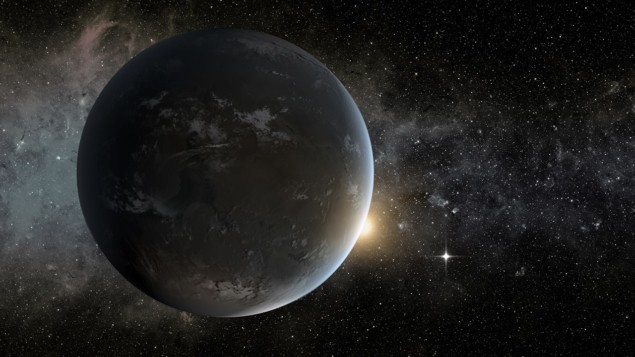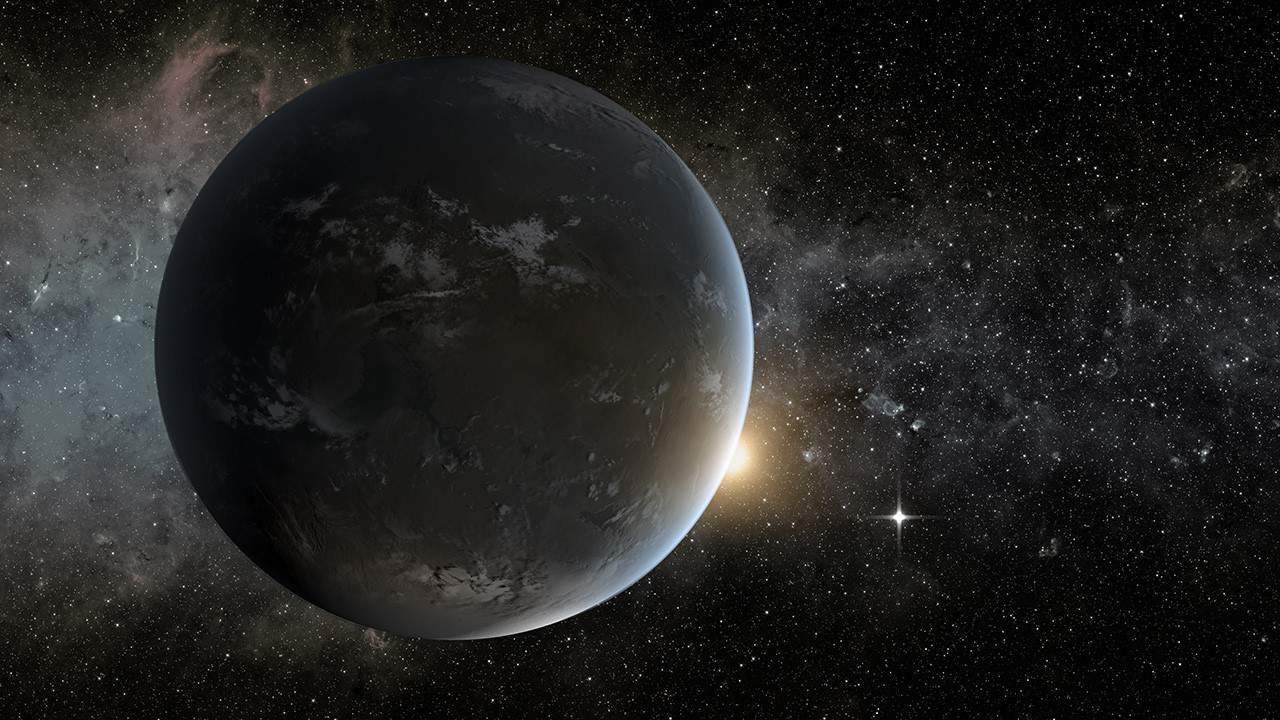
Exoplanets have been spotted orbiting at right angles to each other by an international team of astronomers led by Vincent Bourrier at the University of Geneva. The team believes that this unusual configuration is caused by the influence of a yet-to-be-discovered companion object orbiting the exoplanets’ star.
A star and its planets are believed to form from the same rotating disc of gas and dust. Therefore, the spin of a star should point in the same direction as the plane of the orbits of its planets. The planets in the solar system follow this rule to within a few degrees, but the dwarf planet Pluto is off by about 17°.
Astronomers have discovered more than 3500 exoplanetary systems so far – systems of planets orbiting stars other than the Sun. Studies of the relative orientations of spins of stars and the orbits of their planets would provide important information about how planetary systems form and evolve.
Mini-Neptunes
To do this, astronomers measure the trajectories of exoplanets as they “transit” in front of their star and compare this to a measurement of the spin of that star. In 2019, observations using the HARPS-N spectrograph in the Canary Islands revealed a particularly extreme example of misalignment. Around the star HD3167, two out of three orbiting planets – both “mini-Neptunes” – were misaligned with the star’s spin by close to 90°.
At the time, limitations in spectral and temporal resolution prevented astronomers from determining the orbital plane of HD3167’s much smaller innermost planet. Called HD3167b, this “super-Earth” completes a full orbit in just 23 h. To study this exoplanet, Bourrier’s team developed a new technique that extracts more orbital information from observed optical spectra.
The study involved taking measurements using two ESA instruments: the ESPRESSO spectrograph – part of the Very Large Telescope in Chile – and the CHEOPS space telescope. Together, these instruments allowed the team to determine the misalignment of HD3167b’s orbital plane to within just a few degrees, while measuring its transit time to within an accuracy of just one minute. This revealed that HD3167b’s orbit is mostly aligned with its star’s spin, making it perpendicular to its two planetary companions.

Moon-forming disc is spotted around a giant exoplanet
This suggests that HD3167’s two outermost planets have been influenced by the gravitational tug of a yet-to-be-discovered fourth body. This would have pulled the planets from the original orbital plane of the system and caused them to migrate to their current orientations. In contrast, the results show that HD3167b is likely to be more strongly coupled to its host star, forcing it to continue orbiting in the original plane. Using these results, Bourrier’s team will now expand their search for HD3167’s elusive fourth companion – potentially uncovering new details on how planetary orbits evolve after their initial formation
The research is described in Astronomy and Astrophysics.
